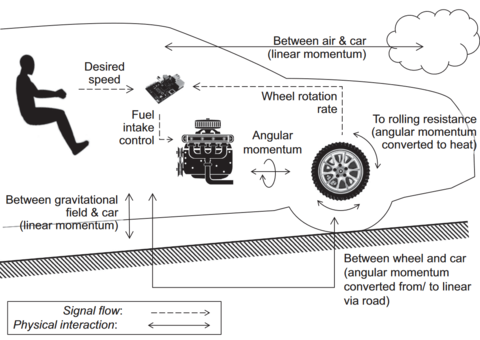New update to SysPhS, a standard that translates between SysML models and 1D simulation tools
Disclaimer: Any mention of commercial products within NIST web pages is for information only; it does not imply recommendation or endorsement by NIST.
The Object Management GroupⓇ (OMGⓇ) recently released an update to a standard called SysML Extension for Physical Interaction and Signal Flow Simulation (SysPhS), prepared by researchers in the Systems Integration Division (SID). The standard specifies translation between SysML, the dominant modeling language for systems engineering, and physical interaction and signal flow (1D) simulation tools, such as ModelicaⓇ and MathWorks SimscapeTM/SimulinkⓇ.
SysPhS increases the efficiency and reliability of engineering processes by enabling systems engineers to interact more easily with domain-specific engineers who perform 1D simulation. This kind of simulation solves differential equations to predict how a system will respond to various operating conditions. 1D models take derivatives of functions of one variable, usually time, whereas 2-, 3-, and 4D models include derivatives of space variables. 1D models can include space variables, but cannot take derivatives of them. This means that engineers performing 1D simulation are finding out how a system will act over time, under some spatial configuration.

Systems engineers coordinate the work of engineers in other domains (mechanical, material, electrical, production, etc.) to describe what they want to build and how that product will fit into a larger system, such as a factory or other manufacturing system. They create SysML models for this purpose. The problem is that all the other types of engineers use their own tools to specify system components and simulate how those components behave, making it difficult and time consuming for systems engineers to bring all that information together into a coherent model of the whole system.
To address this problem, researchers in SID developed an extension of SysML and methods to translate between it and 1D simulation tools that engineers in other domains use. They developed software to validate the extension and method and submitted a specification to the OMG for standardization.
Engineers use physical interaction simulation tools to predict how components in a system exchange various kinds of energy with each other, and signal flow tools to simulate how those components communicate via numeric and boolean signals. Before SysPhS, tools that create these two types of simulations could not be aligned with SysML models, leading to inconsistencies between the simulation tools and overall system models, inconsistencies that made it difficult for engineers to build accurate and efficient models. These kinds of simulation tools use mathematics (differential equations) to precisely specify system behavior. SysPhS, the new standard specification, enables engineers to provide enough information for automated translation between SysML models and 1D simulation tools.
SID researchers were pivotal in developing the SysPhS standard, initiating the work and contributing at each step of the process, interacting with industry to identify common integration problems between systems engineering and 1D simulation, writing the standards documents, and developing software to validate those documents. Since the standard was published, SID researchers have interacted with industry to ensure that it can be implemented and used effectively, as well as to identify needs that future versions of the standard should address. The most recent update includes a new cyber-physical example, showing how physical interaction and signal work together in a single system. It also includes a method for debugging physical interaction models, which are more difficult than signal flow models, due to bidirectional interactions between components.

